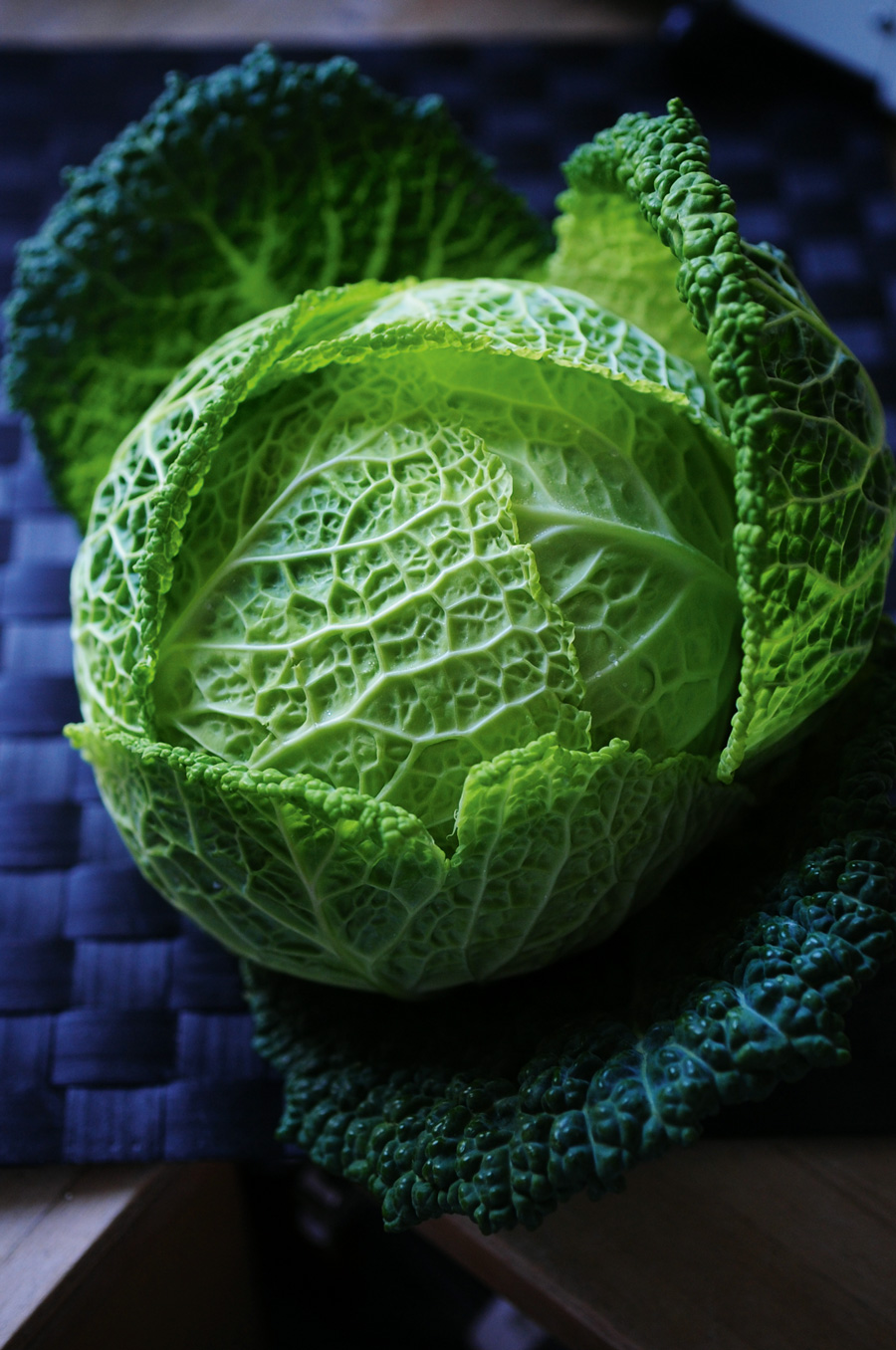Get Premium access to all the latest content online
Subscribe and view full print editions online... Subscribe
With its emerald-green and crinkly leaves savoy is one classy cabbage, perfect for stuffing, stir-frying and slow cooking, says Clarissa Hyman with recipes by Linda Tubby
For years, I thought savoy cabbage was a speciality of the great London hotel of that name, a recipe along the lines of Omelette Arnold Bennett that transformed it into a cabbage fit for kings. Even today, frilly savoy cabbage remains, in my eyes at least, the classiest brassica on the block, a glamorous, swanky sibling to pale, pointy summer or hard white winter cabbages. Less aggressive than kale and more versatile than red, a good savoy, bursting with squeaky clean health and goodness, is a far cry from the flabby cabbage-swamp clichés of school dinners that linger long in collective memory, much like the pungent, over-boiled aroma itself.
The evolution of the great family of brassica cultivars, which also includes broccoli, cauliflower and Brussel sprouts, originated in spindly, ‘headless’ plants – rather like kale – that can still be found growing wild on high sea cliffs around the coast of Britain. It was known throughout the ancient world and from surviving pictures and reliefs, it seems the Egyptian cabbage was also ‘headless’. The Greeks also cultivated headless cabbages, believing they originally came from the sweat of Zeus, chief of the Gods (it must have been something to do with their smell when cooked).
However, generations of children who have been told to eat their greens to a refrain of cabbage-is-good-for-you (an unpopular, as opposed to a popular saying) can blame the Romans. Cato in the 2nd-century BC devoted a long passage to the plant in De Re Rustica, suggesting it be served either cooked or pickled. Pliny the Elder, in Historia Naturalis, described a swollen-stemmed plant (perhaps another brassica, kohlrabi) and ‘headed’ cabbages, as well as an extraordinary 87 cabbage-related medicines.
Savoy, as a newly developed variety with a loose ‘head’, came to prominence in medieval Germany, the great centre of cabbage culture, although the name suggests an earlier French or northern Italian origin, with a possible link to Catherine de Medici. Slow-growing savoys are particularly good after the first frosts. They are hardy enough to stay in the ground through the winter, and bring a swathe of colourful, ruffled cheer to the stews, casseroles, thick soups and root vegetables of these dark months. Cabbage soup remains a rustic favourite in France and Germany, cooked with pickled pork or confit goose and duck.
The flavour of the savoy cabbage is nutty and the texture crisp and firm (when not, of course, overcooked); the natural colour chart ranges from acid yellow through dayglo lime and vivid emerald to deep forest green; and the wrinkled leaves are supple and strong enough to roll around various meat and rice stuffings before being bathed and baked in rich tomato and sour cream sauces that are spiked with caraway seeds or paprika. In fact, one of the greatest spectacles of the Eastern European culinary repertoire is a stuffed whole cabbage winched like a missionary’s head from the cannibal’s pot.
But you don’t have to attempt this culinary equivalent of climbing Mont Blanc to enjoy a savoy. If you wish, and if you have time, soak the leaves in cold water for a few hours before cooking to crisp them up further, then simply remove the tough central stalk and chop roughly. Steam or cook in plenty of water at a rolling boil with the lid off to retain the bright green colour for a few minutes before tossing in butter, sea salt and black pepper. Or just slice and cook briefly in butter. Savoy is also excellent and surprisingly sophisticated when finely shredded and stir-fried with seasonings such as red chilli, sesame, garlic, ginger and soy sauce. It also goes well with aniseed flavours such as tarragon, fennel and Chinese five-spice powder.
Savoy is a fine and fitting accompaniment to roasts, game dishes and chestnuts, and any leftovers can go into making a splendid bubble and squeak. Slow-cooking works equally well: chef Arthur Potts Dawson of London’s Acorn House recommends shredded savoy cabbage cooked for two hours with peeled apples, sultanas, Marsala wine, thyme and honey as the perfect complement to juicy roast pork.
They are not always easy for the domestic gardener to grow – they can bolt or run to seed if left in the field too long; they suffer from caterpillars, pigeons and the dreaded club root. If you get one good one a year, count yourself lucky, then buy the rest at your farmers’ market. Like all cabbages, savoy is best fresh but will keep up to two weeks in a cool place or the fridge.
The savoy is the cabbage that even cabbage-haters can learn to love. If all else fails, try calling it an adorable petit chou, because everything sounds better in French, of course. Even cabbage.

Subscribe and view full print editions online... Subscribe